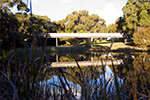Developing spaces for learning
The physical space of a lecture theatre and didactic classroom setting were for a long time seen as the optimal teaching and learning space for tertiary education. Ongoing development and use of technology in teaching means it is now possible to bring much more diverse materials into the physical classroom setting, to bring the classroom materials into off-campus environments, and to create virtual classrooms that can be attended anywhere in the world. There are many interconnected locations and spaces that students finds themselves in when studying, such as private learning areas that are in the home, or informal learning areas such as the library. As teachers we need to consider both the physical and virtual learning and teaching spaces, and what is required for optimal learning opportunities.
The spaces we inhabit impact significantly on how we process and retain information. For some, studying in the family lounge room or on a crowded bus works well, and others may prefer the quite space of a library or the park. Some will prefer to study on their own, whilst others will prefer to workshop as a group.
Metaphors of everyday learning spaces
In the Australian Learning and Teaching Council Report (2009), Scott Morris noted metaphors for everyday learning spaces as:
| Campfire | Watering hole | Cave | Mountain top |
|---|---|---|---|
A structured space in which students face a teacher and listen to traditional knowledge | An informal space where students can discuss, create and collaborate informally | A private space for independent and reflective work | A space for presenting work to an audience to demonstrate understanding |
A structured space in which students face a teacher and listen to traditional knowledge
| A space where students can discuss, create and collaborate formally and/or informally.
| A private space for independent and reflective work
| A space for presenting work to an audience to demonstrate understanding
|



